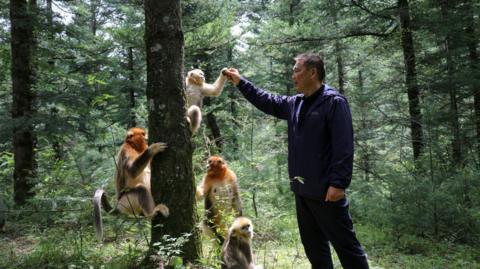Until the 1980s, the mountains of Shennongjia in central China were a battleground for hunters targeting monkeys for their meat and fur. Deforestation and illegal logging contributed to a drastic decline in the population of golden snub-nosed monkeys, reducing their numbers to less than 500 individuals.
However, when Professor Yang Jingyuan arrived in 1991, the situation began to improve. Now the director of the Shennongjia National Park Scientific Research Institute, Yang has dedicated his career to protecting this species. Now it's being protected, and the monkey figures are really improving, he states.
Conservation efforts have transformed the region, with 400 square kilometers of habitat now safeguarded against human interference. The population of these monkeys has surged to approximately 1,600, thanks to a series of community-driven initiatives that encourage local residents to shift from destruction to protection of their natural heritage.
Yang, now in his 50s, has developed a deep understanding of the monkeys’ social behaviors. He has dedicated significant time to studying their calls, which signify safety or danger among groups.
As the conservation movement gained momentum, local farmers were reeducated on the importance of sustainable practices. Many switched from victimizing the forest to protecting and patrolling it, leading to more stable ecosystems and an increase in the monkey population.
Today, the forests of Shennongjia not only shelter golden snub-nosed monkeys but are also a rich habitat for many other species, contributing to a vibrant biodiversity.
Through years of persistent effort and innovative conservation strategies, the golden snub-nosed monkey represents a beacon of hope for endangered wildlife, embodying the potential for recovery and resilience in the face of adversity.





















